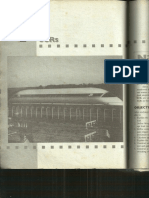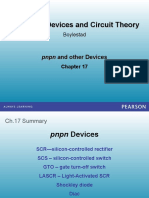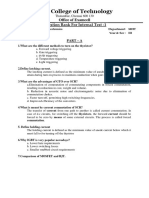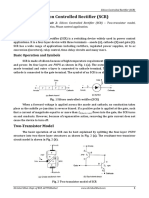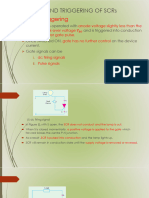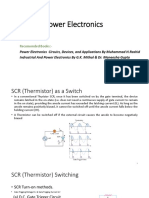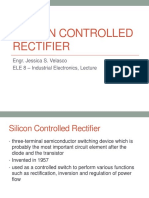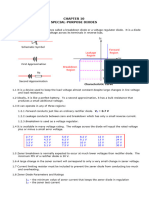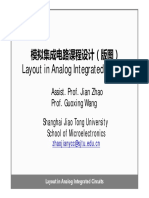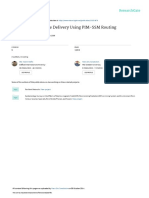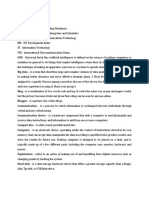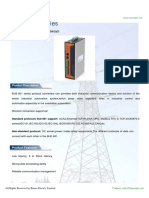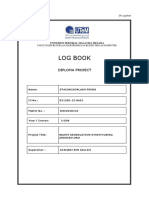0% found this document useful (0 votes)
58 views13 pagesIE-Topic-17 - Silicon Control Rectifier
This document discusses the principles of operation of a silicon controlled rectifier (SCR). An SCR is a three-terminal semiconductor device that acts as a switch, conducting current when triggered by a voltage pulse to its gate terminal. The document describes the basic operation of an SCR, including how it can be triggered into conduction and turned off. It also covers the key electrical ratings of SCRs such as forward breakover voltage, holding current, and gate trigger current. Protection circuits called snubber networks are also introduced to prevent sharp voltage increases from damaging the SCR.
Uploaded by
Captain AmericaCopyright
© © All Rights Reserved
We take content rights seriously. If you suspect this is your content, claim it here.
Available Formats
Download as DOC, PDF, TXT or read online on Scribd
0% found this document useful (0 votes)
58 views13 pagesIE-Topic-17 - Silicon Control Rectifier
This document discusses the principles of operation of a silicon controlled rectifier (SCR). An SCR is a three-terminal semiconductor device that acts as a switch, conducting current when triggered by a voltage pulse to its gate terminal. The document describes the basic operation of an SCR, including how it can be triggered into conduction and turned off. It also covers the key electrical ratings of SCRs such as forward breakover voltage, holding current, and gate trigger current. Protection circuits called snubber networks are also introduced to prevent sharp voltage increases from damaging the SCR.
Uploaded by
Captain AmericaCopyright
© © All Rights Reserved
We take content rights seriously. If you suspect this is your content, claim it here.
Available Formats
Download as DOC, PDF, TXT or read online on Scribd
/ 13


